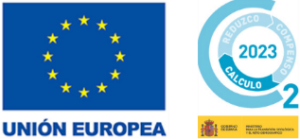Today we propose a global solution applied to the process water in the Chemical Industry.
A leading company belonging to the chemical industry sector and dedicated to the manufacture of basic chemical products, such as chlorine and caustic soda, sodium hypochlorite and hydrochloric acid, among others, contacted J. Huesa Water Technology, to provide a comprehensive solution to the problem of inlet water supply at the entrance to the factory, and adapt it to the requirements that have in their different lines of consumption: manufacturing process, contribution to boilers and cooling towers.
The raw water coming from a reservoir passes through a thick pre-treatment at the entrance of the facilities, to be later treated by J. Huesa‘s equipment.
After the inlet water analytics study, a treatment line design was proposed consisting of two stages: a first treatment stage based on an ultrafiltration equipment to produce 45 m^3⁄h; and a second stage of reverse osmosis that produces 30 m^3⁄h.

The ultrafiltration equipment is preceded by a pre-treatment consisting of a self-cleaning mesh filtering equipment to protect the fibres inside the modules. Ultrafiltration is made up of 14 membranes, each with a 64 m^2 filtration surface, which guarantees a molecular cut of the particles below 0.2 µm.

The ultrafiltration system is assembled on a stainless steel skid, which is equipped with the electrovalves and equipment necessary to carry out the different automatic cleaning processes:
– Hydraulic – cleaning with water only;
– and CEB’s with chemical products for cleaning.
The skid is equipped with the instrumentation and control elements, such as flow meters or pressure sensors, which safeguard the operation of the plant. All the equipment is connected to an electric panel, equipped with a touch screen control and an automaton, which governs the correct operation of the ultrafiltration plant.
The ultra filtered water is accumulated in an intermediate tank that serves to provide service for the ultrafiltration cleaning process, as well as for the supply of water to the reverse osmosis equipment.
In the case of the reverse osmosis, the plant has been manufactured in a stainless-steel skid that integrates all the elements. The pump group provides a reverse osmosis input flow of 40 m^3⁄h. At the entrance of the skid, antifouling and scavengerare dosed, chemical products whose function is to prevent salt incrustation inside the membranes and to eliminate chlorine present in the water to protect the membranes. The water is then passed through a 5-micron safety pre-filter to ensure that all solids are removed.
Once the water is ready, it is pumped by a high-pressure pump to the osmosis housings. In this case, 5 housings of 7 semi-permeable membranes have been installed and arranged in the 3 + 2 configuration. In this way, an efficiency of 75% can be obtained, which corresponds to a production of 30 m^3⁄h.with a conductivity of 3.0 µS/cm2. In this case, the rejection flow produced by the reverse osmosis equipment (10 m^3⁄h), is accumulated in an intermediate tank, from where the customer manages it in other areas of their facilities, so there is no discharge.

In this case, the reverse osmosis skid itself has a sweeping or flushing system installed, which guarantees automatic cleaning of the membranes inside the pipes. These cleanings are programmed from the touch screen, always following the specifications marked in the operation manual and every time the plant is stopped. As in the case of ultrafiltration, the reverse osmosis plant is equipped with instrumentation and control elements (automatic valves, pressure switches, pressure transmitters, flow meters, conductivity and pH meters…) that are centralized in an electric panel installed in the skid itself and provided with an automaton that governs the plant and a touch screen for the operation and configuration of these. This makes it possible for the supervision for the correct operation of the plant to be minimal.
With this solution that integrates different technologies, J. Huesa has given a satisfactory global answer to the needs that the client raised to us as for the increase of flows required for his productive process and characteristics of the final water.
The advantages acquired by our client after the application of this water treatment facility are:
- Obtaining a constant flow of quality water according to their needs that ensures production to the customer. All this is done with versatile, highly efficient equipment that requires low maintenance.
- We have managed to simplify the operation by allowing the use of the equipment following some minimum guidelines set out in the documentation prepared by the production department of the company.
- With the aim of reducing the customer’s water consumption, as well as improving the quality of the water obtained, this ultrafiltration plus reverse osmosis sequence has been developed, improving the performance of the plant.
- This saving, added to the low maintenance of the installation, low electricity consumption and the benefits obtained from reuse, means that the amortization of the cost of the installation is very short.






